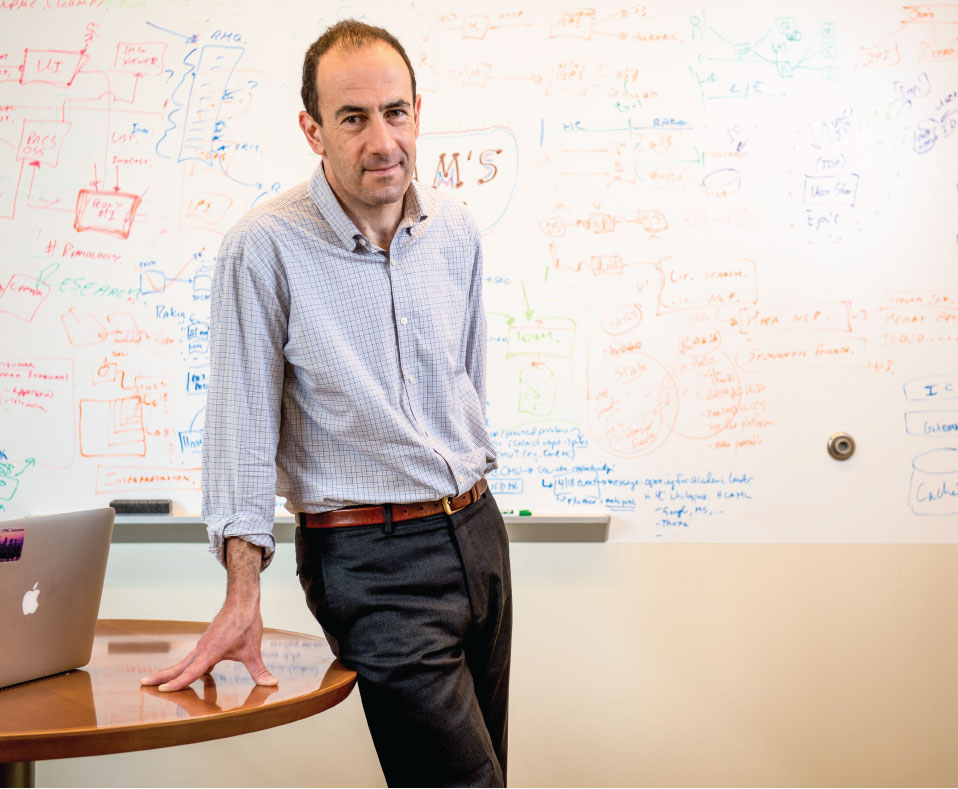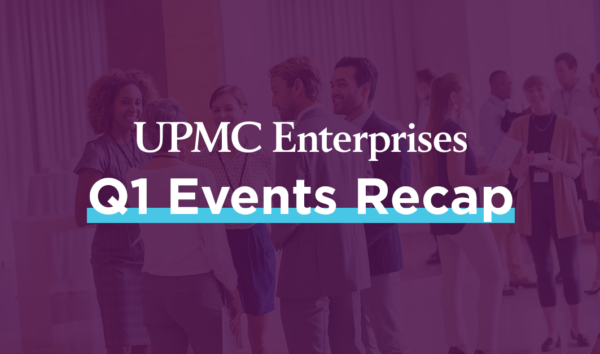Making room for serendipity and instilling sound principles for health IT innovation

Adam Berger came to Pittsburgh in the 1990s to work on a PhD at Carnegie Mellon University with the expectation that he would leave after earning the degree. But like a lot of Pittsburgh transplants he stayed, started a family, and found success in the city’s burgeoning tech ecosystem.
Berger, who became chief technology officer of UPMC Enterprises in 2016, co-founded two successful technology startups after Carnegie Mellon. The first was Eizel Technologies, which developed software systems for synchronizing corporate email and calendar information with employee handsets. Eizel was acquired in 2003 by Nokia, where Berger led an R&D group in Nokia’s Enterprises Systems division for about two years following the acquisition. The second startup was Penthera, a company whose products manage the delivery and viewing of high-quality video on mobile devices. Berger co-founded the company in 2007 and remains a senior advisor.
In addition to the PhD in computer science, Berger holds degrees in physics and computer science from Harvard. He has published more than 20 refereed papers and is an inventor on 20 issued U.S. patents.
We asked Berger to tell us more about his experience, his approach to technology development at UPMC Enterprises, and the challenges of working in health information technology.
What brought you to UPMC Enterprises?
After years in the startup world, I was looking for the next thing when a mutual friend introduced me to Tal Heppenstall, the president of UPMC Enterprises. This friend warned me that I would never want to work in health care because it was too complicated and messy. But I suspect he was using reverse psychology on me, because the more Tal and I talked about what UPMC was trying to do, the scale of health care and the amount of data, and all the opportunities to apply machine learning to health data, the more interested I became.
What does your work as CTO involve?
I’d break it into three main areas. First is team-building; I work hard to attract to Bakery Square engineers and scientists who are passionate and curious about health IT. Second, I spend a lot of time with UPMC’s portfolio companies and find ways to support them. Third, I’m trying to lay out a set of technology principles that allows UPMC to innovate better and more quickly. One of these principles is an aggressive move to the public cloud. I see other health systems around the country taking notice of our move and trying to replicate our successes.
A key initiative for me has been hcOS, which, at its most basic, is an umbrella strategy for health IT. I am most proud of the financial benefits we’re providing to UPMC, and the commercial opportunities that I anticipate we will spin out of hcOS over the next several years.
What’s the biggest lesson from your tech career that applies to your work in health care?
There’s a story I like to tell about serendipity. In my first startup we built a software product that let people access the web on their mobile phone. This was back in the pre-iPhone era and we weren’t making much headway. Turns out that no one wanted to view web pages on their crappy little mobile phones. Then, for fun, one of our engineers decided to retrofit our software to be an email proxy so he could read his email on his phone. He built and deployed the proxy over a weekend, came into the office the following Monday and showed it to me. I was amazed – it was like a lightbulb flipping on. We quickly pivoted the company, and that’s the use case that allowed our company to be a success.
The point of that story is it’s important to give people space to imagine. We want to allow room for that kind of serendipity to take hold at UPMC Enterprises.
And what’s the greatest difference between working in health IT and other IT industries?
The bar is higher in health care because the stakes are higher. We take information security, regulations, and system robustness all very seriously. If we build a component that gets integrated in a sequence of real-time clinical systems and that component fails, it could trigger a domino effect that may ultimately impact patient care. We can’t afford to let that happen.
Mark Zuckerberg is famous for saying, “Move fast and break things.” That may work at Facebook but that’s not going to work in health care.
Is there a piece of advice you’d give to entrepreneurs or startups looking to break into health IT?
Even though I’m a technologist, I understand that the people who make the buying decisions at large health care organizations care less about the technology itself and more about solving problems and getting a meaningful return on their investment. Because of that, we try to spend a lot of time on upfront analysis to understand who would pay for this and why, and what problem does it solve for them.
There’s an infinite number of projects we could work on here, but only a small subset of those have a provable financial benefit to a health system. So, we have to be disciplined in where to spend our time.
Finally, what was your first job and what did you learn from it?
When I was a teenager in the suburbs of New York, I had a lawn-mowing business. I would walk my mower around and cut grass for people in the neighborhood. From that experience, I learned marketing because I had to create fliers and put them in mailboxes to generate business. I learned about upselling because some customers would also want some flowers planted or hedges trimmed. And I also learned about scaling a business, or more accurately, not scaling a business. I could only go out as far as I could push my mower and only work a certain number of hours in a day. That was a business with a low revenue ceiling.



